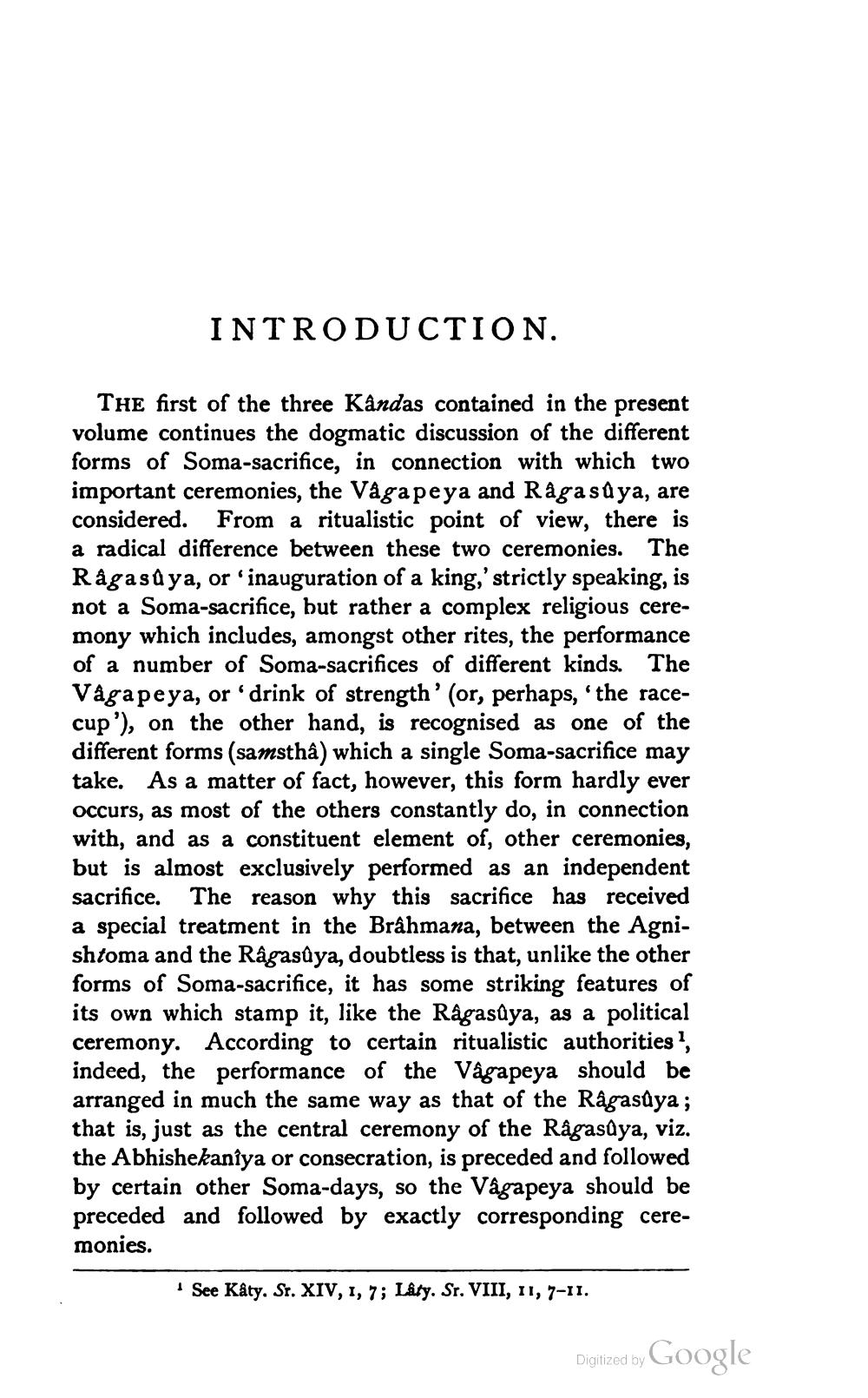________________
INTRODUCTION.
THE first of the three Kândas contained in the present volume continues the dogmatic discussion of the different forms of Soma-sacrifice, in connection with which two important ceremonies, the Vâgapeya and Râgasûya, are considered. From a ritualistic point of view, there is a radical difference between these two ceremonies. The Ragasûya, or 'inauguration of a king,' strictly speaking, is not a Soma-sacrifice, but rather a complex religious ceremony which includes, amongst other rites, the performance of a number of Soma-sacrifices of different kinds. The Vågapeya, or 'drink of strength' (or, perhaps, 'the racecup'), on the other hand, is recognised as one of the different forms (samsthâ) which a single Soma-sacrifice may take. As a matter of fact, however, this form hardly ever occurs, as most of the others constantly do, in connection with, and as a constituent element of, other ceremonies, but is almost exclusively performed as an independent sacrifice. The reason why this sacrifice has received a special treatment in the Brâhmana, between the Agnishtoma and the Râgasûya, doubtless is that, unlike the other forms of Soma-sacrifice, it has some striking features of its own which stamp it, like the Râgasûya, as a political ceremony. According to certain ritualistic authorities1, indeed, the performance of the Vagapeya should be arranged in much the same way as that of the Râgasûya; that is, just as the central ceremony of the Râgasûya, viz. the Abhishekaniya or consecration, is preceded and followed by certain other Soma-days, so the Vâgapeya should be preceded and followed by exactly corresponding ceremonies.
See Kâty. Sr. XIV, 1, 7; Lâty. Sr. VIII, 11, 7-11.
Digitized by
Google




